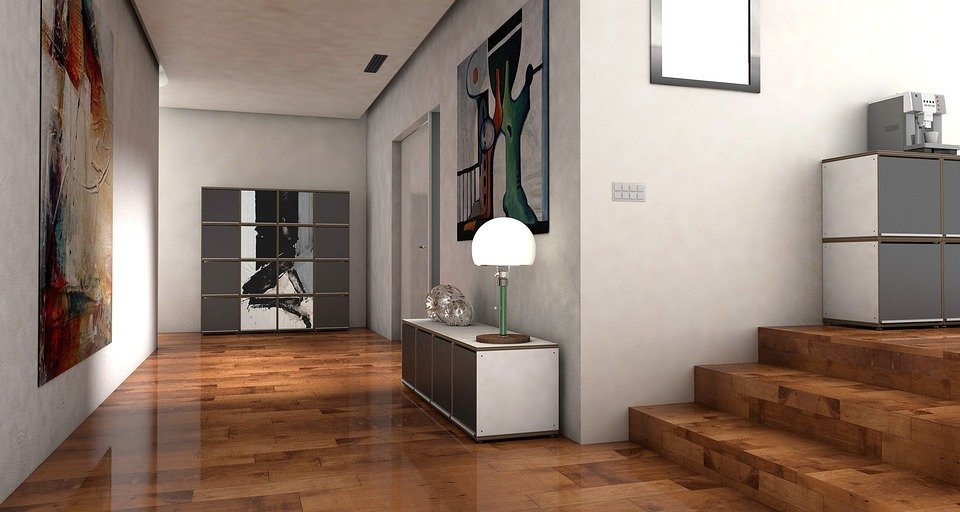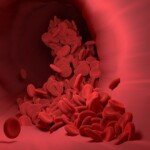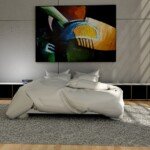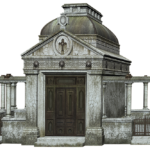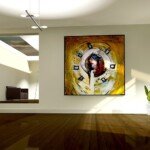Embrace Innovation: Deepening the 3D Printed Drawer Slides
Drawer slides are the unsung heroes of furniture and cabinets that can smooth operation and bear heavy loads. Traditionally, these components were made from steel or aluminum, and now, thanks to additive manufacturing, these components are undergoing a revolutionary transformation, especially Metal 3D printing. This guide explores the fascinating world of 3D printed drawer slides, delving into their strengths, design considerations, nuances in manufacturing, and why working with professional metal experts Great It is the key to unlocking its full potential.
Beyond Traditional Manufacturing: Why 3D Print Drawer Slides?
The regular production route slides for drawers limit design freedom and customization. However, 3D printing breaks these constraints:
- Unrivaled design freedom: Complex geometric shapes that are impossible to mill or stamp (e.g., complex lattice structures that reduce weight, internal channels for lubrication management, or integrated installation functions) become feasible. This allows performance optimization beyond flat metal plates or extrusion functions.
- Radical customization: Need a slide for bent drawers, non-standard sizes, or specific load/capacity requirements? 3D printing can enable true custom manufacturing. Each slide can be precisely tailored to its unique application without the costly tools required for mass production.
- Lightweight without sacrificing power: Using topological optimization techniques to strategically remove material in design software creates powerful but incredibly lightweight slides. This is crucial for applications in aerospace, automotive or portable devices counted per gram.
- Performance Integration: Internal features can be printed directly into the slide: self-lubricating polymer deposits, channels for lubrication mechanisms and even bearings. This reduces assembly steps and improves long-term reliability.
- Rapid prototype and iteration: Quickly, cost-effectively test new slide designs. Iterating between functional prototypes within a few days, your product development cycle is dramatically accelerated compared to traditional tool delivery times.
- Complex material combinations (potential): Advanced multi-matter printing studies are a slide opening door that combines metals with other materials with reduced friction or friction at specific contact points or wear resistance.
Material Matters: The Power of Metals for 3D Printing Slides
Although polymers have prototype effects, Metal As an end-use, the undisputed choice for high-performance 3D printed drawer slides. Metals provide:
- High strength and rigidity: Ability to handle large loads without deformation or failure – is critical for reliable operation under pressure.
- Excellent durability and wear resistance: Despite the millions of sliding cycles and resistance to wear, it is far better than high-performance plastics.
- Thermal stability: Maintain size and mechanical properties over a large temperature range without the influence of warming caused by ambient heat or friction.
- Dimensional accuracy and stability: The metal provides inherent stability after post-printing, especially after proper heat treatment, ensuring consistent smooth operation.
GRESTLIGHT expertise Using cutting-edge technology in advanced metal 3D printing Selective laser melting (SLM) and Direct Metal Laser Sintering (DML). These processes use precise lasers to fuse fine metal powders (e.g. stainless steel such as 316L and 17-4PH, aluminum alloys such as aluminum alloys such as Alsi10mg, Ti6al4v, etc., equals a layer, layering one layer into a fully dense functional component. Their expertise ensures that the alloy selected perfectly balances your specific requirements for strength, weight, corrosion resistance and cost.
Mastering the design: Key things to note
Designing printable drawer slides requires expertise:
- Directions and support: Strategically speaking, orienting parts on the build board minimizes support demand, reduces post-processing labor, and ensures critical bearing surfaces maintain optimal surface finishes.
- Topology optimization: Use software tools to analyze load paths and intelligently remove materials only at the locations of structural non-essentials to create the optimal strength to weight ratio.
- Tolerances and Permits: Explain post-treatment steps such as heat treatment and finishing, which may result in smaller dimension shifts. Design accurate sliding gaps in shrinkage and surface roughness.
- Wear and lubrication strategies: During the printing process, design functions, etc. are used to integrate grooves or reservoirs for lubrication systems. Consider finishes or coatings (provided by Greatlight’s post-treatment services) to further enhance wear resistance.
- Load path and pressure analysis: During the design process, finite element analysis (FEA) simulation is used to model stresses under load and ensure robust performance without over-engineering and unnecessary material use.
Greglight’s manufacturing advantages: bringing design to life
Converting complex CAD designs into reliable high-performance metal drawer slides requires not only a printer, but also a deep expertise and a strong infrastructure. GRESTLIGHT is good at In this field:
- Advanced Metal Technology: Their cutting-edge SLM/DMLS equipment ensures high resolution, consistent part density and excellent mechanical properties comparable to exercise materials.
- Material mastery: Access to a wide range of certified metal powders and in-depth knowledge of their handling parameters ensures that your specific slideshow requires the best results.
- Integration post-processing: Fresh metal parts usually need to be finished. Greatlight offers a comprehensive suite of services: pressure rotation/heat treatment for material stability, precise CNC machining for critical surface and bearing fit, support disassembly, polishing, grinding, shooting, peo and specialized coatings (e.g., DLC, DLC, TIN) for ultra-low friction and extended life.
- Strict quality control: The use of CMM (coordinate measuring machine) inspection, dimensional inspection, surface roughness measurement and material testing (tension, hardness) ensures that each slide meets strict specifications for performance and reliability.
- Agile Services: From rapid prototypes to short-term to medium-sized production runs, Greatlight accelerates innovation by providing flexible solutions for project schedules and volumes.
in conclusion
3D printed drawer slides represent tangible advances in functional hardware design and manufacturing. By leveraging the unique functions of metal additive manufacturing – especially complex services, e.g. Great – Designers and engineers can overcome traditional limitations. result? Whether in high-end furniture, cutting-edge aerospace interiors, medical equipment or specialized industrial equipment, lighter, stronger, more complex and highly customized slides are designed specifically for their intended applications. Freedom of managing costs while effectively positioning 3D printed metal slides as a convincing solution for the future of precise motion components. If your drawer system is seamlessly customized, weight reduction and peak performance are critical, explore Greglight’s Metal 3D Printing Expertise It’s the next step.
FAQ: 3D Printing Drawer Slideshow
-
Q: Is the 3D printed metal drawer slide strong enough?
one: Absolutely. Metal slides using stainless steel (316L, 17-4PH) or titanium can achieve the advantage over regular stock slides when printing using advanced technologies such as Greatlight (e.g., Greatlight) using advanced technologies (e.g., SLM/DML). Key benefits include the ability to optimize geometry Bigger Strength where needed, lighter elsewhere. The final properties are comparable to that after appropriate post-treatment and are generally comparable to conventionally manufactured equivalents. -
Q: How much does 3D printed slides compare to traditional slides?
one: Due to the setup cost, 3D printing eliminates tool investment, so small-scale machining of a single custom slide can be expensive, making it highly competitive for one-time, prototypes and low to medium volumes. The value lies in enabling Designs that were impossible before This provides performance advantages (weight savings, integrated features) may offset the cost. High volumes of the same slides may still benefit traditional stamping/extrusion, but 3D printing wins customization and complexity. -
Q: Which metals are best for 3D printed drawer slides?
one: Popular options include:- Stainless Steel 316L: Excellent corrosion resistance, good strength, widely used.
- 17-4ph stainless steel: Higher strength and hardness than 316L can precipitate.
- Aluminum (e.g., Alsi10mg): Ideal for moderate load requirements in very lightweight applications.
- Titanium (Ti6al4v): Special strength to weight ratio and corrosion resistance used in aerospace/medical.
Greatlight’s expertise helps select the best materials for your specific load, environment, friction and budget needs.
-
Q: Is the surface smooth enough to slide without adding bearings?
one: "first aid" Metal parts have characteristic roughness. However, It is easy to solve through post-processing. Greatlight provides CNC machining for bearing contact surfaces for extremely fine finishes ( - Q: Why choose a metal 3D printing service like Greatlight instead of doing it yourself (for example, using plastic)?
one: And the desktop FDM printer can prototype this form Cheap sliding, they lack Strength, rigidity, durability, wear resistance and heat resistance Functional end-use application is required, especially under load. Metal printing (SLM/DML) requires substantial capital investment, deep metallurgical knowledge and post-processing capabilities. Greglight provides:- Advanced metal-specific equipment and materials.
- Expertise on additive design rules and optimization.
- Key functional post-treatment (heat treatment, processing, finishing).
- Strict quality assurance.
Working with Greatlight ensures reliable, high-performance slideshows that consumer-grade plastic printers simply cannot achieve. For functional heavy duty slides, printing metal 3D through professional services is essential.
